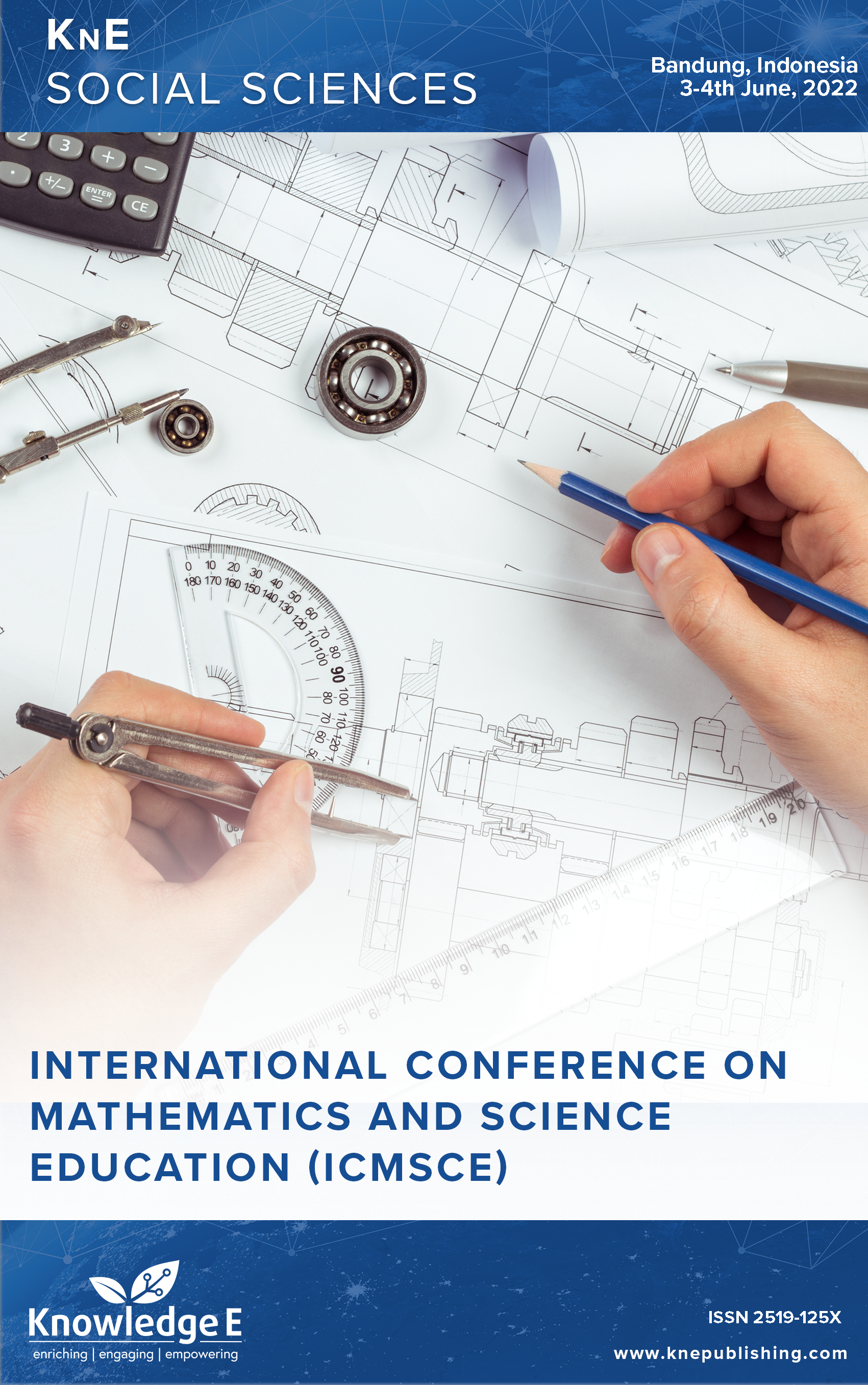Students' Errors in Constructing Mathematical Proofs by Direct Method
DOI:
https://doi.org/10.18502/kss.v9i13.15969Abstract
In mathematics, there are several methods for proving mathematical statements, two of them are direct method and indirect method. Both the methods were included in the mathematics curriculum at senior high school level as a learning topic. It implied that the teachers or pre-service teachers must master these methods. In addition, learning advanced mathematics courses also needed the ability of mathematical proving. The direct method was often used in proving mathematical statements. This descriptive qualitative study was conducted to examine what errors were written by the students in constructing mathematical proofs by direct method. Two basic problems (mathematical statements) were administered to 13 college students. They were pre-service mathematics teachers in one of the public universities in Aceh, Indonesia, and were asked to prove the statements by direct method. The data were analyzed by using Miles and Huberman step. The results showed that there were three main errors, (1) errors in using definition correctly, (2) errors in algebraic process, and (3) proving by examples. It concluded that the students must be accustomed to mathematical proving activities to avoid errors in constructing mathematical proofs.
Keywords: constructing mathematical proofs, direct method, students’ errors
References
Kemendikbud. “Peraturan menteri pendidikan nasional RI no. 22 tahun 2006. tentang standar isi kurikulum pendidikan dasar dan menengah.” Departemen Pendidikan Nasional. p. 2006.
Principles N. “Standards for school mathematics reston, va natl.,” Counc. Teach. Math. p. 2000.
Doruk M, Kaplan A. “Prospective mathematics teachers’ difficulties in doing proofs and causes of their struggle with proofs,” 1st International Eurasian Educational Research Congress. pp. 315–328, 2015.
Rav Y. “Why do we prove theorems?” philosophia mathematica. vol. 7, no. 1, pp. 5–41, 1999. https://doi.org/10.1093/philmat/7.1.5. DOI: https://doi.org/10.1093/philmat/7.1.5
Hersh R. Proving is convincing and explaining. Educ Stud Math. 1993;24(4):389–99. DOI: https://doi.org/10.1007/BF01273372
Herizal H, Suhendra S, Nurlaelah E. The ability of senior high school students in comprehending mathematical proofs. Journal of Physics: Conference Series. Institute of Physics Publishing; 2019. https://doi.org/10.1088/1742-6596/1157/2/022123. DOI: https://doi.org/10.1088/1742-6596/1157/2/022123
Coe R, Ruthven K. Proof practices and constructs of advanced mathematics students. Br Educ Res J. 1994;20(1):41–53. DOI: https://doi.org/10.1080/0141192940200105
Güler G, Dikici R. Examining prospective mathematics teachers’ proof processes for algebraic concepts. Int J Math Educ Sci Technol. 2014;45(4):475–97. DOI: https://doi.org/10.1080/0020739X.2013.837528
Weber K. Student difficulty in constructing proofs: the need for strategic knowledge. Educ Stud Math. 2001;48(1):101–19. DOI: https://doi.org/10.1023/A:1015535614355
Moore RC. Making the transition to formal proof. Educ Stud Math. 1994;27(3):249–66. DOI: https://doi.org/10.1007/BF01273731
Houston K. How to think like a mathematician: a companion to undergraduate mathematics. Cambridge: Cambridge University Press; 2009. https://doi.org/10.1017/CBO9780511808258. DOI: https://doi.org/10.1017/CBO9780511808258
Mertens DM. Research and evaluation in education and psychology: integrating diversity with quantitative, qualitative, and mixed methods. Sage publications; 2019.
Creswell JW. Research design: qualitative, quantitative, and mixed methods approaches. California: SAGE Publications, Inc; 2014.
Tong DH, Loc NP. Students’ errors in solving mathematical word problems and their ability in identifying errors in wrong solutions. Eur J Educ Stud. 2017;3(6):226–41.
Fei Lai C. Technical report: error analysis in mathematics. Eugene; 2012.
Stavrou SG. Common error and misconceptions in mathematical proving by education undergraduates. Issues in the Undergraduate Mathematics Preparation of School Teachers. 2014;1:1–8.

